Introduction
The Video Doorbell Pro 2 by Ring LLC (Model: 5AT2S2) stands at the forefront of smart home security, offering homeowners advanced video monitoring, seamless connectivity, and robust weather resistance. Designed to integrate directly with home doorbell wiring, this device delivers high-definition video streaming, two-way audio, and instant notifications—all essential features for modern security-conscious consumers.
A notable milestone in its development is its FCC certification under FCC ID 2AEUPBHALP031. This approval is not merely a regulatory checkbox; it confirms that the Video Doorbell Pro 2 complies with stringent US radio frequency emission standards, ensuring it is legal to market, sell, and operate within the United States. Such certification is crucial for devices relying on advanced wireless technologies, as it guarantees both user safety and reliable performance in increasingly crowded wireless environments.
In this article, we’ll dissect the key features and specifications of the Video Doorbell Pro 2, explore its wireless technology and operating frequencies, and provide an expert-level teardown of its internal components. We’ll also delve into the regulatory insights gleaned from its FCC filing and discuss practical use cases that highlight its value proposition.
Key Features & Specifications
The Ring Video Doorbell Pro 2 is engineered for durability, connectivity, and smart functionality. Its design reflects a commitment to robust outdoor performance and seamless integration with modern home automation systems. Below are the standout features and technical specifications that define this device.
Key Features
- Outdoor Durability: Engineered to withstand harsh weather conditions, the device is tested for water resistance, including exposure to high-pressure water jets (see manufacturer marketing claims for precise details).
- Power Flexibility: Designed to connect directly to standard home doorbell wiring, supporting continuous operation and eliminating the need for frequent recharging.
- Regulatory Compliance: Fully compliant with FCC (United States) and IC (Canada) radio frequency regulations, ensuring lawful operation and minimal RF interference.
- Safety Protocols: The device must be charged indoors and only when dry, aligning with best practices for lithium battery safety.
- Wide Operating Temperature Range: Reliable operation from -5°F to 120°F (-20°C to 50°C), making it suitable for diverse climates.
- Integrated Backup Power: Equipped with a lithium-polymer battery for backup, maintaining basic functionality during power interruptions.
- Bluetooth Capability: Bluetooth is present, facilitating streamlined setup and potential integration with other smart devices (specific details not provided).
Technical Specifications
- Device Name: Video Doorbell Pro 2
- Model Number: 5AT2S2
- Electrical Rating: 16–24 VAC, 40VA max, 50/60Hz
- Temperature Rating: -5°F to 120°F (-20°C to 50°C)
- Wireless Technologies: 2.4GHz/5GHz Wi-Fi, Bluetooth (as inferred from FCC filings and internal analysis)
- Water Resistance: Tested to withstand water projected through a 6.3mm nozzle at a flow of 12.5 liters/minute and pressure of 30 kPa from 3 meters for at least 3 minutes
Practical Benefits
- Reliable Outdoor Operation: With its rugged enclosure and weatherproofing, the device can be confidently installed in exposed locations without risk of water ingress or temperature-related failure.
- Continuous Power: Hardwired installation ensures uninterrupted operation, while the internal battery provides resilience during brief outages.
- Seamless Connectivity: Dual-band Wi-Fi and Bluetooth enable stable video streaming and simplified setup, ensuring reliable communication with home networks and smart devices.
- Regulatory Assurance: FCC and IC compliance means the device meets strict standards for electromagnetic compatibility and user safety, reducing the risk of interference with other electronics.
Operating Frequencies
The Ring Video Doorbell Pro 2 (Model: 5AT2S2, FCC ID: 2AEUPBHALP031) utilizes a sophisticated array of wireless frequencies to deliver robust performance and connectivity. According to its FCC filing, the device operates on the following frequency bands and output power levels:
| Frequency Range (GHz) | Output Power (mW) | FCC Rule Part |
|---|---|---|
| 2.402-2.48 | 9.5 | 15CCC |
| 2.402-2.48 | 9.8 | 15CCC |
| 2.402-2.48 | 9.5 | 15CCC |
| 2.402-2.48 | 9.8 | 15CCC |
| 2.412-2.462 | 591.6 | 15CCC |
| 2.412-2.462 | 591.6 | 15CCC |
| 5.18-5.24 | 148.3 | 15ECC |
| 5.18-5.24 | 148.3 | 15ECC |
| 5.26-5.32 | 143.9 | 15ECC |
| 5.26-5.32 | 143.9 | 15ECC |
| 5.5-5.72 | 138.4 | 15ECC |
| 5.5-5.72 | 138.4 | 15ECC |
| 5.745-5.825 | 96.4 | 15ECC |
| 5.745-5.825 | 96.4 | 15ECC |
These frequencies cover the 2.4GHz and 5GHz ISM bands, commonly used for Wi-Fi and Bluetooth, ensuring compatibility with most modern home networking environments and supporting stable, high-throughput wireless connections.
Technology Deep Dive
The Video Doorbell Pro 2 harnesses advanced wireless technologies to deliver reliable connectivity and performance. Its operation on both 2.4GHz and 5GHz bands enables it to leverage the strengths of each: the 2.4GHz band offers superior range and penetration through walls, while the 5GHz band provides higher bandwidth and reduced interference from household devices.
Bluetooth functionality, as confirmed in the device’s documentation, is likely used for initial setup and pairing, streamlining the installation process for users. While cellular connectivity is not present, the combination of dual-band Wi-Fi and Bluetooth ensures robust communication for video streaming, event notifications, and firmware updates.
The output power levels, particularly the higher values in the 2.4GHz and 5GHz Wi-Fi bands, suggest strong signal strength for reliable video transmission, even in challenging RF environments. The relatively lower power levels for Bluetooth reflect its design for short-range, low-energy communication. Careful RF design, including multi-layer PCB construction and integrated antennas, minimizes susceptibility to interference and maximizes data throughput.
Test reports referenced in the FCC filing confirm that the device meets regulatory requirements for RF exposure and electromagnetic compatibility, further supporting stable operation in dense wireless environments. Overall, the device’s wireless architecture is engineered for optimal performance, balancing range, speed, and regulatory compliance.
In-Depth Internal Component Analysis / Teardown
Main PCB, Battery, and EMI Shielding
A detailed examination of the internal component photographs reveals a meticulously engineered main PCB at the heart of the Video Doorbell Pro 2. The board showcases a high-density, multi-layer design, with several major integrated circuits—most notably the main system-on-chip, likely responsible for video processing and wireless connectivity—protected under robust metal EMI shields. Integrated antennas, likely implemented as PCB traces, are incorporated for Wi-Fi and Bluetooth operation. Multiple wire harnesses provide modular connections for power, audio, and sensors, while gold-plated pogo pin contacts on the rear housing facilitate testing and assembly. The presence of a lithium-polymer battery, large filtering capacitors, and advanced voltage regulation components highlight the device’s resilience against power interruptions. Overall, the assembly demonstrates high build quality, robust EMI control, and a compact, serviceable layout—hallmarks of a premium, connected video doorbell.
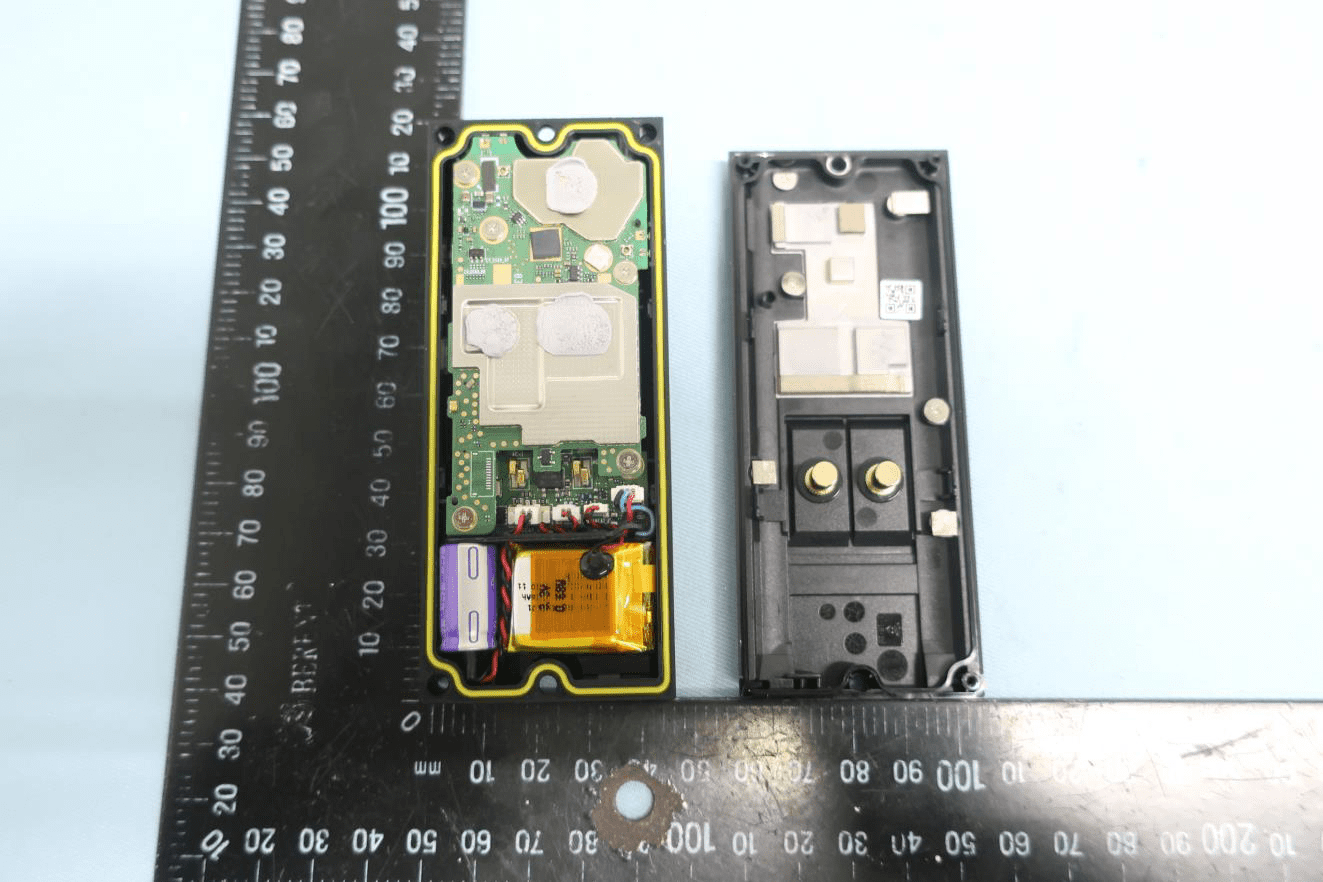
PCB, Integrated Antenna, and Speaker Module
The internal component layout further reveals a high-density main PCB with a prominent integrated PCB trace antenna, optimized for 2.4GHz/5GHz Wi-Fi and Bluetooth. The board is populated with finely pitched SMD components, heavy EMI shielding, and a modular connector system. A large shielded area likely houses the core SoC and RF transceiver, while a white FPC connector nearby links to the camera or sensor module. The detached secondary module, connected via a JST-style connector, is identified as the speaker or buzzer, essential for two-way audio and alerts. The design’s modularity and test points underscore a focus on manufacturability and field servicing, while the use of integrated antennas and careful grounding ensures optimal wireless performance and regulatory compliance.
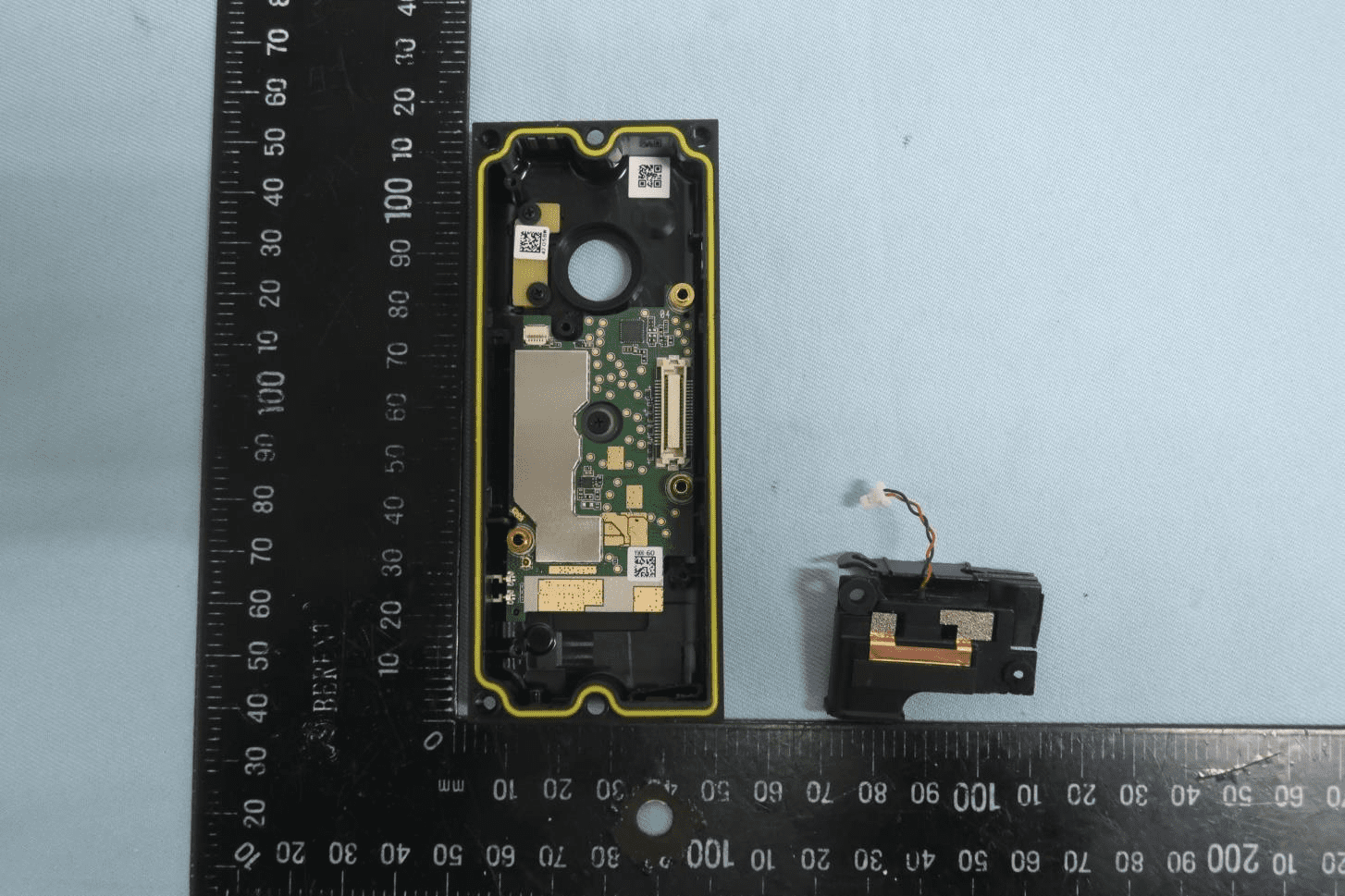
Ambarella SoC, Memory, and High-Speed PCB Layout
A close-up of the main PCB reveals an Ambarella CV25M-A1-RH AI vision processor at the core, flanked by two SK Hynix memory chips—likely LPDDR4 DRAM or NAND flash—delivering the horsepower for high-resolution video streaming and AI-driven analytics such as motion or person detection. The multi-layer PCB, densely packed with fine-pitch passive and active components, demonstrates meticulous attention to signal integrity, with extensive via stitching and ground pours. A secondary controller, possibly handling wireless connectivity, is also present. The absence of visible antennas or shielding on this board side suggests reliance on PCB-level design for EMI control and the presence of RF structures elsewhere. This configuration reflects a sophisticated, high-performance architecture essential for seamless video capture and processing in a compact form factor.
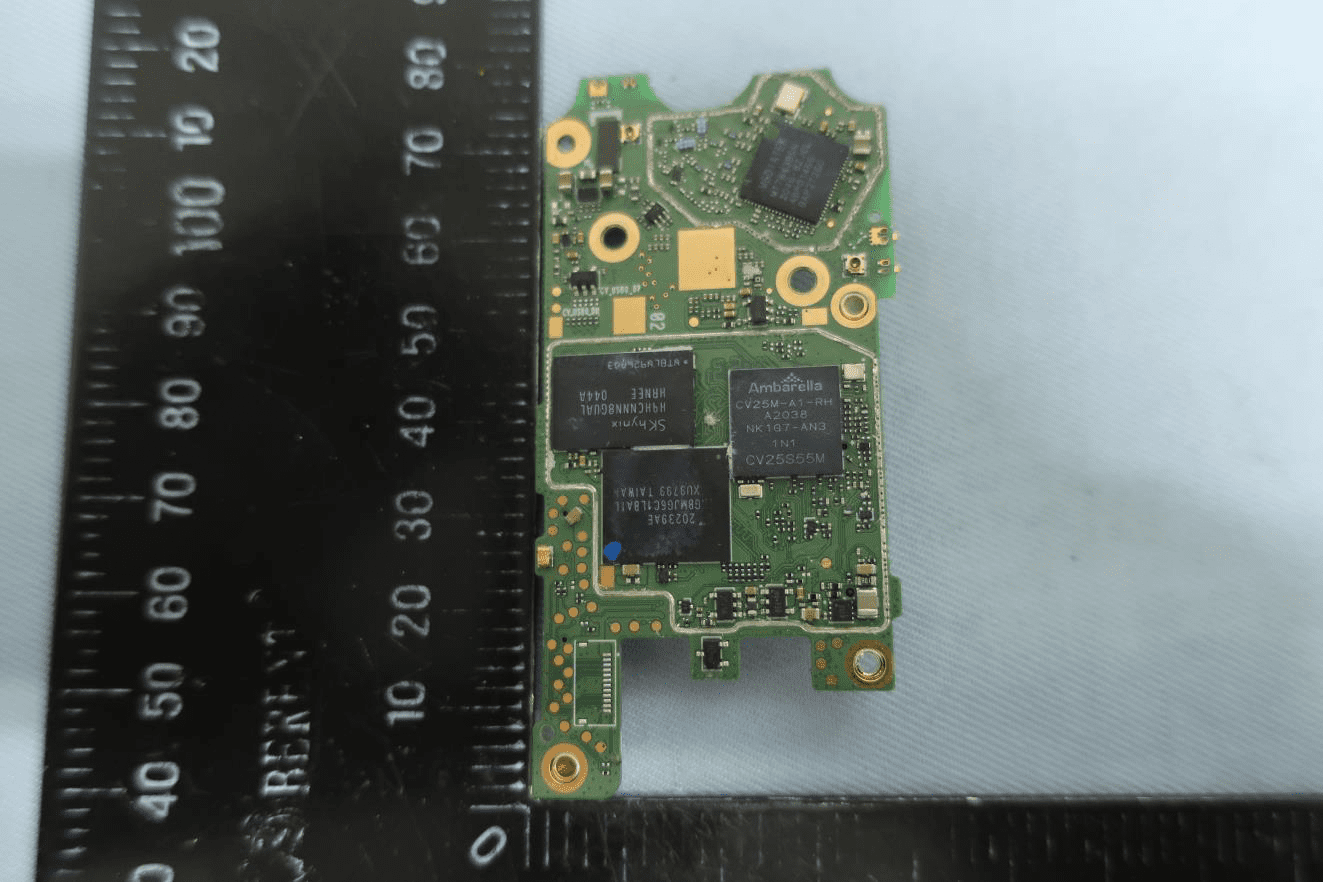
Dual-PCB Architecture with Camera and Main Boards
Further disassembly reveals a dual-PCB architecture: the main board houses a large BGA-packaged SoC, memory, and power management ICs, while a separate camera board integrates the lens assembly and image sensor. Multiple FPC connectors and board-to-board interconnects facilitate modular assembly and repair. The high component density, extensive use of vias, and robust power regulation circuitry are evident, supporting both high-speed video data and efficient power conversion. The absence of visible EMI shielding suggests reliance on enclosure-level shielding or PCB design techniques. This modular approach enhances manufacturability and serviceability, while supporting the device’s core functions: high-quality video capture, wireless communication, and efficient power management.
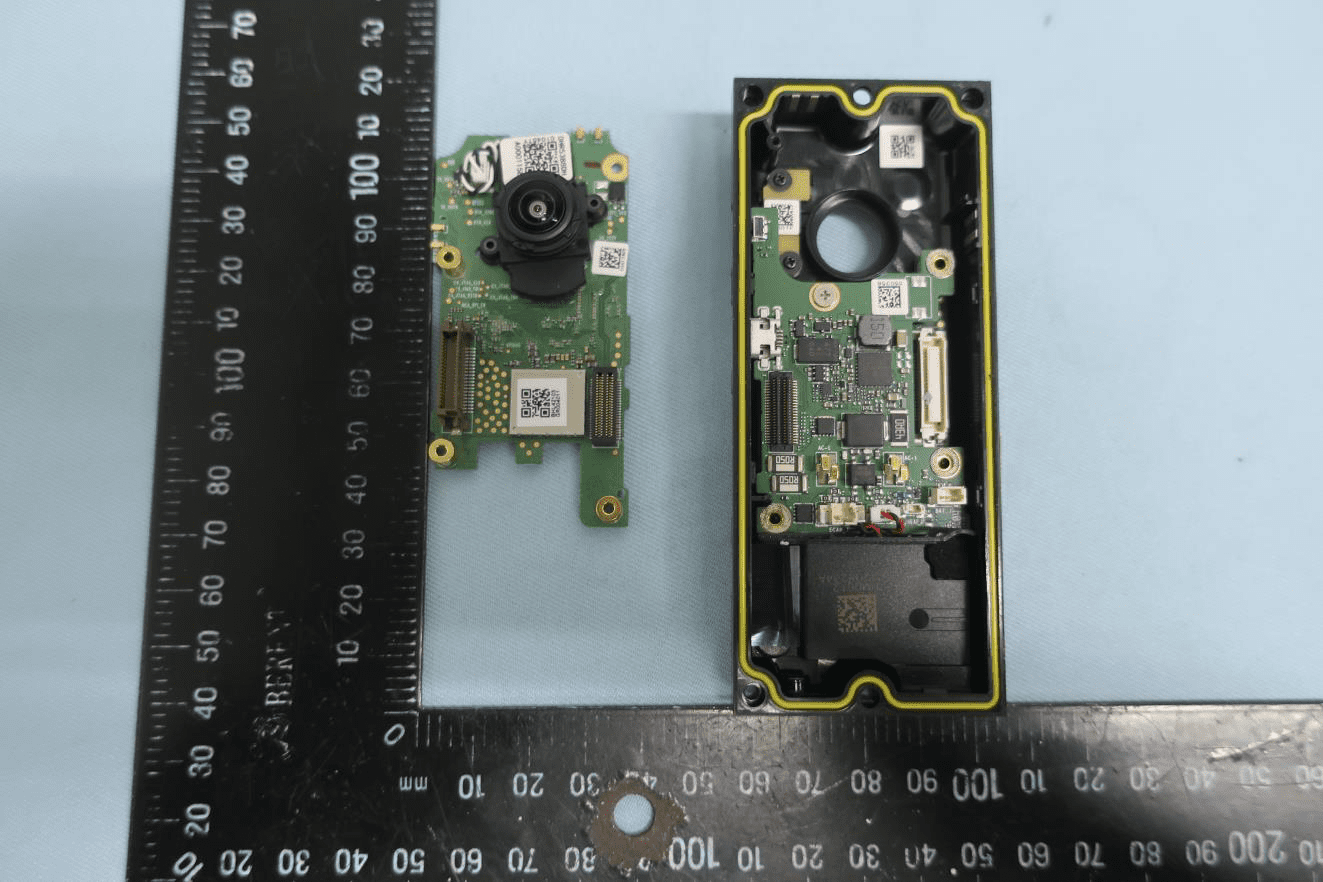
Main PCB with Dual Battery Types and EMI Shielding
Another cross-section of the Video Doorbell Pro 2’s internals highlights the inclusion of both a cylindrical and pouch-type battery, indicating a design optimized for both main and backup power. The main PCB showcases multiple EMI shields, thermal pads for heat dissipation, and a densely packed component layout. Distinctive PCB trace patterns at the top suggest integrated Wi-Fi/Bluetooth antennas. Several connectors facilitate modularity, while large capacitors and inductors provide robust power regulation. The careful integration of power components, wireless elements, and high-speed signal routing exemplifies a sophisticated, highly integrated design, ensuring reliable performance and resilience against power fluctuations.
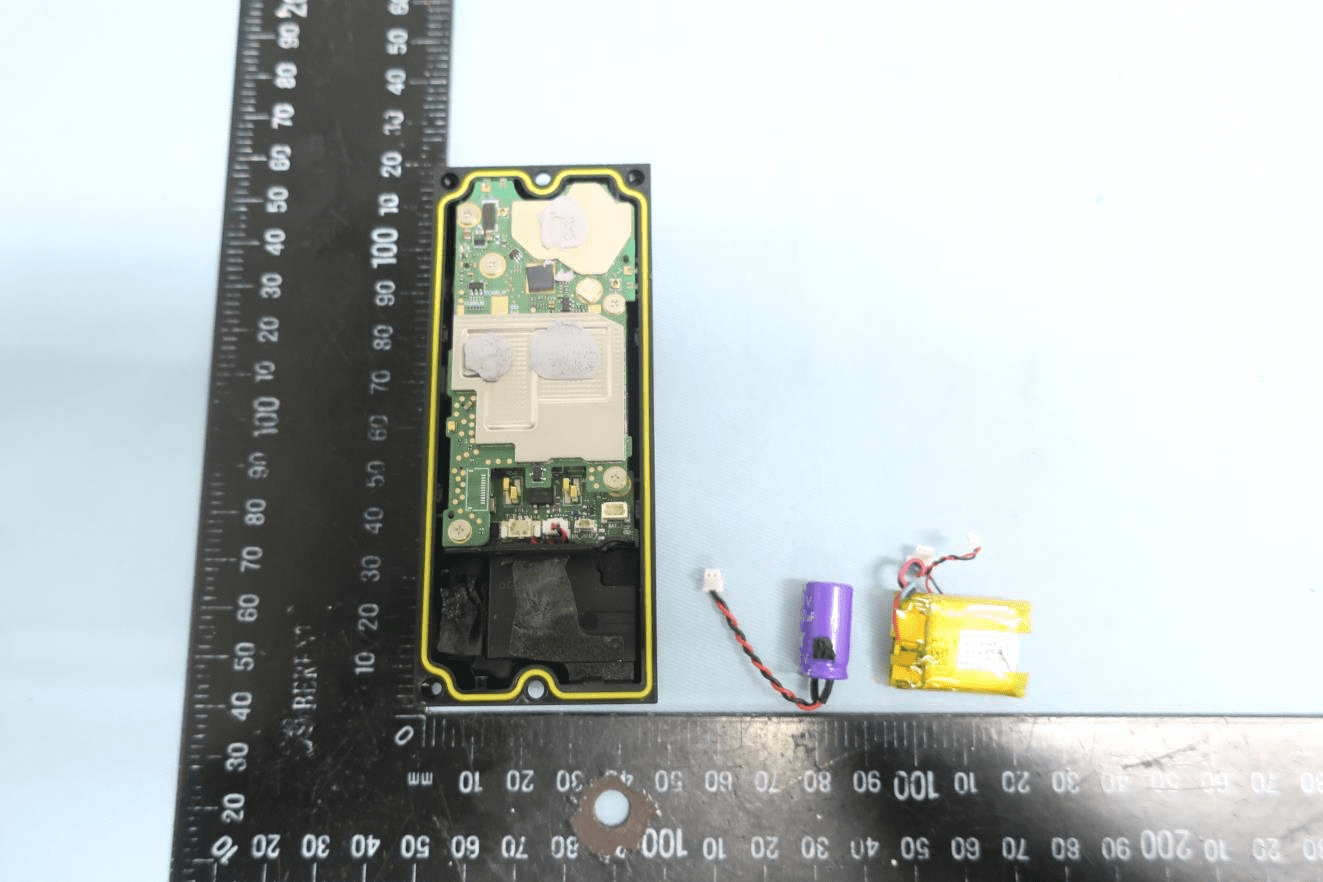
Main PCB, Battery, and Back Cover Shielding
Inspection of another internal view shows the main PCB partially covered by robust EMI shields, with thermal pads ensuring efficient heat transfer to the case. The Li-ion pouch battery, situated near the bottom, is paired with a protection circuit, while gold contacts on the back cover facilitate AC/DC power input from doorbell wiring. Multiple connectors and test points are visible, supporting modular assembly and diagnostics. The extensive use of shielding and compact, high-density layout reflect a focus on RF performance and thermal stability, critical for a device designed for outdoor, always-on operation. The overall engineering prioritizes wireless connectivity, power efficiency, and regulatory compliance.
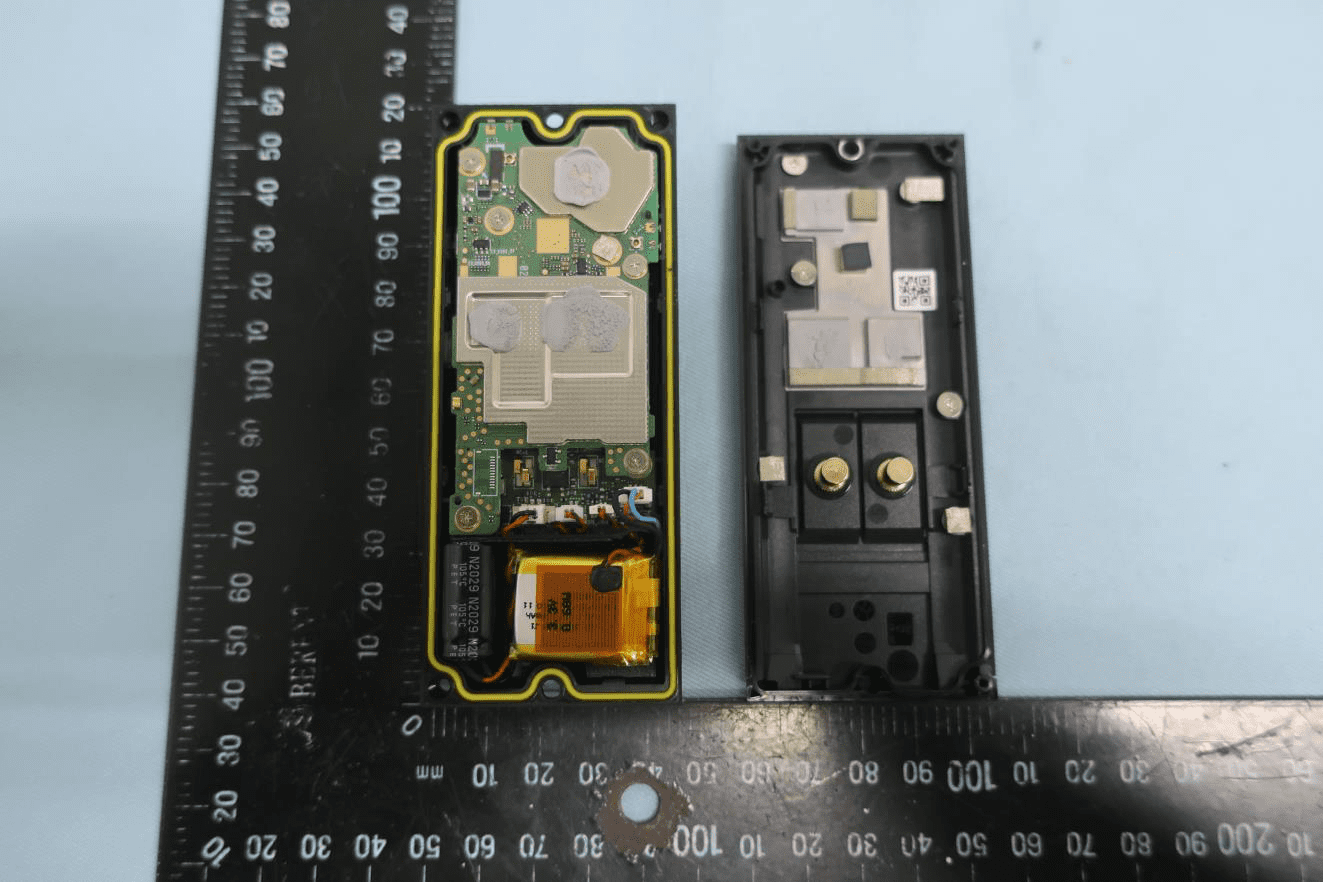
Camera/Sensor PCB and Weatherproof Housing
A focused view of the camera/sensor PCB reveals a compact, circular cutout for lens alignment and several tactile switches for internal functions such as reset or programming. The PCB is moderately dense, with careful component placement and grounding. The adjacent housing features a yellow gasket, underscoring the device’s emphasis on weatherproofing and environmental sealing. The presence of test points and modular connectors further highlights a design optimized for manufacturing and serviceability. The lack of visible antennas or power regulation components suggests a dedicated role for camera/sensor interfacing, with RF and power elements handled by the main board. This modular, environmentally sealed construction is essential for reliable outdoor performance and longevity.
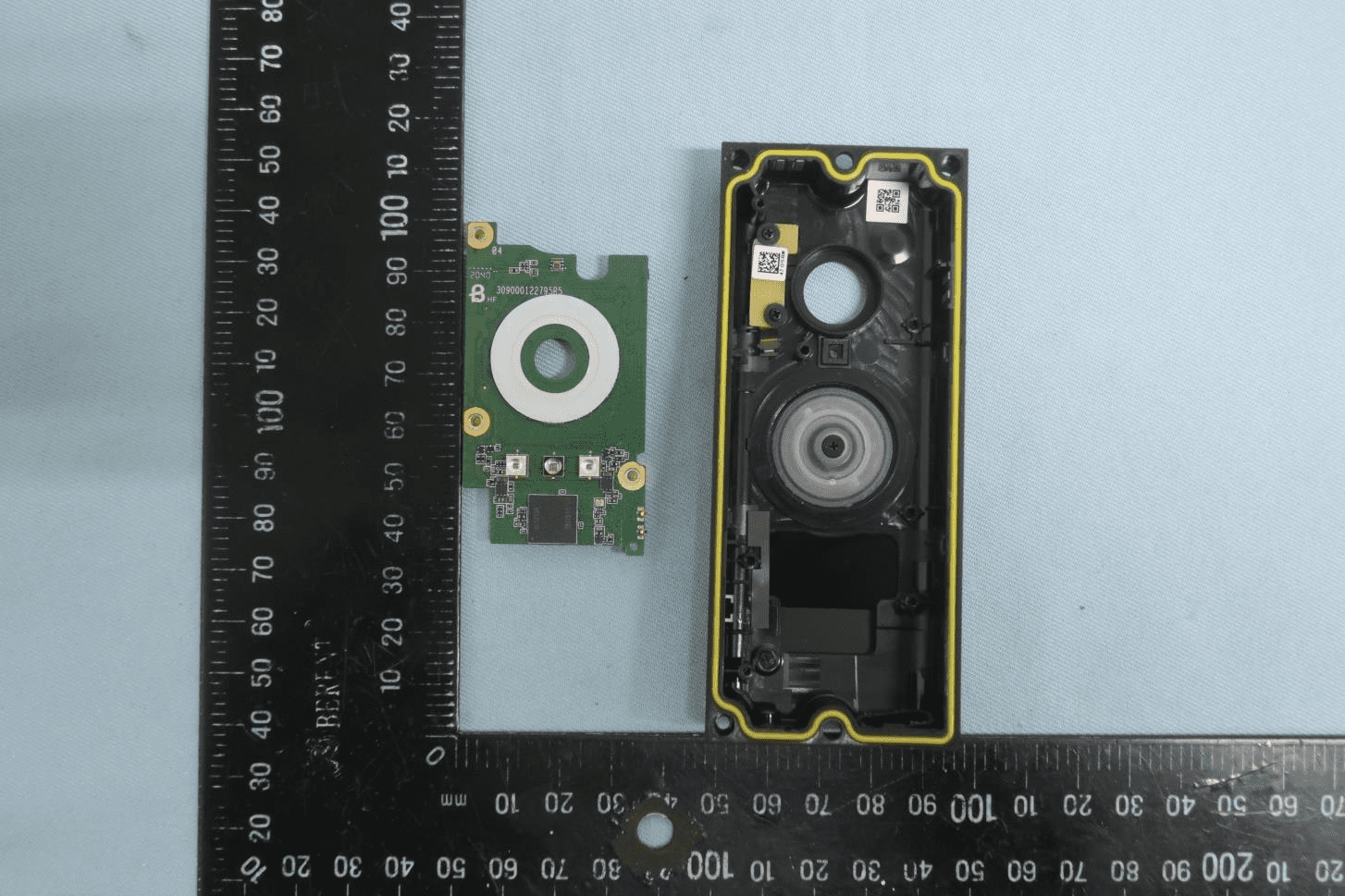
Regulatory Insights & FCC Filing
The FCC certification of the Ring Video Doorbell Pro 2, under FCC ID 2AEUPBHALP031, is a testament to its compliance with rigorous US electromagnetic interference and radiofrequency emission standards. This certification, registered with the FCC, is a legal prerequisite for marketing and selling wireless devices in the United States. It ensures that the device operates safely within designated frequency bands and does not cause harmful interference to other equipment.
FCC filings for this device encompass a range of technical documents, including RF exposure and EMC test reports, internal and external photographs, user manuals, schematics, and block diagrams. These materials collectively provide insights into the device’s design, safety measures, and overall quality.
The user manual, as referenced in the filing, emphasizes crucial safety and installation guidelines—such as ensuring the device is charged only indoors and kept dry during charging. It details regulatory notices, including compliance with both US (FCC) and Canadian (IC) standards. Internal documentation further highlights the device’s robust EMI shielding, modular design, and attention to thermal management—all factors that contribute to its successful certification and reliable performance in the field. The FCC’s thorough testing and documentation requirements ensure that the Video Doorbell Pro 2 not only meets legal standards but also aligns with consumer expectations for safety and performance.
Potential Use Cases & Target Audience
The Video Doorbell Pro 2 is designed for a wide spectrum of users seeking advanced home security solutions. Its versatile feature set and robust construction make it ideal for several practical scenarios:
- Homeowners in Harsh Climates: With its ability to operate across a broad temperature range and withstand high-pressure water jets, this device is perfectly suited for regions experiencing extreme weather. Users can rely on continuous monitoring and notifications, regardless of environmental conditions.
- Smart Home Enthusiasts: Those invested in home automation benefit from the device’s seamless integration with existing doorbell wiring, dual-band Wi-Fi, and Bluetooth capabilities. The advanced video and audio features enable real-time interaction and high-definition footage, elevating overall home security.
- Frequent Travelers or Remote Users: Individuals who travel often or manage properties remotely can leverage the device’s reliable wireless connectivity and backup power features to monitor entrances, receive alerts, and interact with visitors from anywhere, ensuring peace of mind even when away.
Conclusion
The Ring Video Doorbell Pro 2 (Model: 5AT2S2) exemplifies the latest in smart home security technology, blending robust wireless connectivity, high-definition video processing, and weather-resistant engineering in a compact form factor. Its FCC certification under ID 2AEUPBHALP031 underscores its compliance with stringent regulatory standards, guaranteeing safe and lawful operation. With advanced internal components, modular design, and thoughtful attention to power and RF performance, the Video Doorbell Pro 2 is a standout choice for homeowners seeking reliability, security, and seamless integration into modern smart homes. As the demand for connected security devices grows, this model sets a benchmark for both technological sophistication and regulatory compliance.